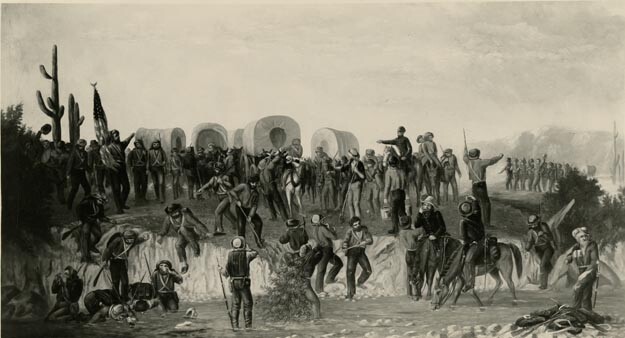Most Latter-day Saints have heard of the Mormon Battalion. Many might even know the basic story of why it was created and what happened along the way. But what nobody, including researchers, knew until recently was precisely who was counted among the ranks of the historic military unit.
As we celebrate the 175th anniversary in the battalion’s history, here is a look at the surprising historical impact of the Mormon Battalion and why research to identify its members is so important.
A Rocky Beginning
At the time that United States President James K. Polk requested Latter-day Saint military volunteers during the Mexican-American War, relations between the Latter-day Saints and the US government were strained at best. After having been driven from place to place and losing the Prophet Joseph Smith while government leaders largely turned a blind eye, the Saints were in fact preparing to go west toward what would become the Salt Lake Valley, which was not part of the United States at the time.
Daniel B. Rawson, who ultimately joined the battalion, wrote, “I felt indignant toward the Government that had suffered me to be raided and driven from my home. I made the uncouth remark that ‘I would see them all damned and in Hell.’ I would not enlist. On the way to the Bluffs we met President Brigham Young, Heber C. Kimball and Willard Richards returning, calling for recruits. They said the salvation of Israel depended on the raising of the army. When I heard this, my mind changed. I felt it was my duty to go.”
Yet despite all this, Brigham Young approved the formation of a battalion that would not only serve the government who had not helped them but that would also reduce the number of men who could help the Saints make the trek to Zion. There were many reasons behind the decision, including monetary benefits and a chance for both the Saints and the government to unquestionably prove their loyalty to each other. But no matter the reasons, the sacrifice and courage of the Mormon Battalion members was significant enough that prophets, historians, and history enthusiasts alike have felt a strong pull over the years to research and preserve their histories through organizations such as the Mormon Battalion Association.
Three Imprints on American History
To understand why learning the accurate identities of Mormon Battalion members is so exciting, we first need to understand the importance of the battalion itself.
As the first and only religious battalion ever to exist in the US, the Mormon Battalion began making history the moment it was created in July 1846. Greg Christofferson, vice president of the Mormon Battalion Association, and Laura Anderson, the executive director-historian of research at the Mormon Battalion Association, highlight three major impacts the battalion’s march to California had both then and today.
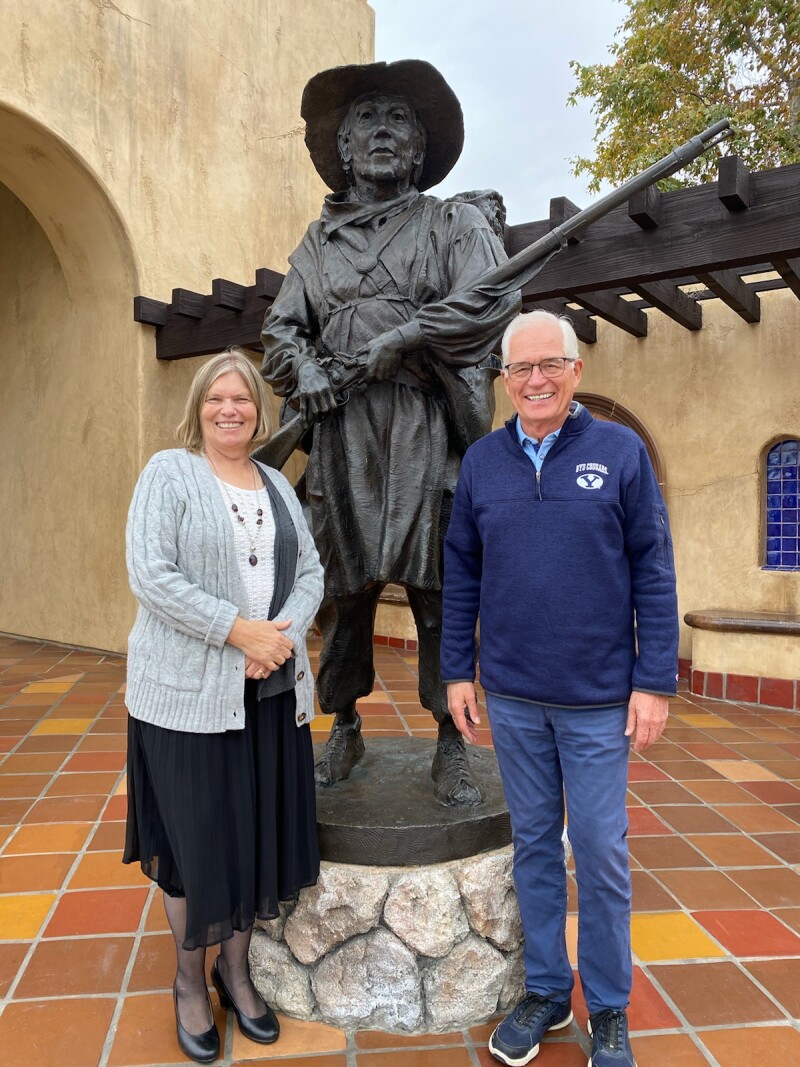
1. The battalion paved the way for major highways.
It is easy to see how the Mormon Battalion’s wagon roads benefited early travelers, who could previously only use a pack mule for travel. But these roads actually still benefit us today. Anderson explains,
“[The Mormon Battalion] opened both a southern route and the route across Carson Pass and several other different routes. Most of our highways in the Southwestern United States—I mean east to west—are over routes that the Mormon Battalion opened for wagon roads.”
Additionally, discharged Mormon volunteers hauled the first wagons from Los Angeles to Salt Lake on the trail now traversed by I-15.
2. Battalion members played several small roles in the California Gold Rush.
Six months after the Latter-day Saint pioneer immigrant ship Brooklyn arrived in San Francisco in July 1846, members of the Mormon Battalion joined them in California in January 1847. For the greater part of 1847, a good share of the white people in California were Latter-day Saints.
Some discharged battalion members quickly returned to the Salt Lake Valley or went further east to help their families cross the plains, while others stayed in California. A few who stayed were actually at Sutter’s Mill in 1848 at the start of the California Gold Rush. But even before gold was discovered, the road that the discharged battalion opened on their way back to the Salt Lake Valley paved the way for another opportunity, Christofferson says, boosting the Salt Lake economy in part by bringing gold seekers and other travelers who needed to purchase supplies on their way to California.
“It’s interesting. If the Mormon Battalion had not opened the northern route—you think about all the gold seekers that came through Salt Lake and how that helped the Utah economy. … I mean, it is quite a story—they're enlisted for just one year, but their legacy just went on and on,” Anderson says.
3. The march of the Mormon Battalion contributed to the Gadsden Purchase.
The Mormon Battalion’s march was an important event leading up to the Gadsden Purchase in 1854. This purchase added of all of the Mexican land north of the Mormon Battalion’s route to the United States—over 29,000 square miles. Christofferson further explains the battalion’s role in the purchase:
“The hostilities in California were over by the time the battalion got there. The real purpose of the battalion was to prove that the United States could maintain an army in the field that Mexico couldn’t. … You have to be able to take wagons from Fort Leavenworth [Kansas] to California. … And so what the battalion proved was that the United States government had the ability to maintain an army in the Southwest, … and from that directly came the Gadsden Purchase of the battalion route.”
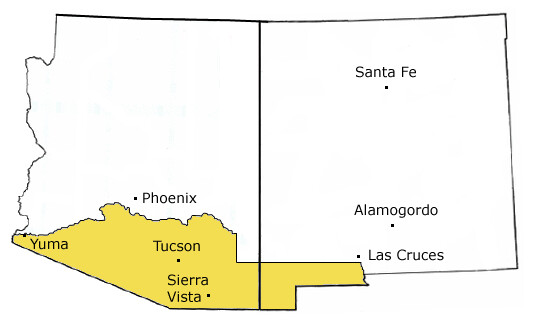
Latter-day Saint Heroes
The march of the Mormon Battalion holds just as significant a role in Church history as it does in American history, however. In fact, it was a vital part of building Zion and provided key financial support to the Latter-day Saints, Christofferson says:
“Each of the enlisted men were given a $42 clothing allowance [$1,480 in today's money]. This money was assigned as specified by the soldier, [and] most of them directed a portion to be sent to their families. Brigham Young called this cash injection into the struggling pioneer camps ‘the temporal salvation of this camp [the camp of Israel].’ It also resulted in the soldiers arriving in California with the clothing they began the march with literally in rags.”
A large number of the men who marched in the Mormon Battalion had the privilege of receiving their temple endowment in the Nauvoo Temple and had been instructed by Brigham Young to “keep their garments clean” while on their march.
Upon arriving in California at the end of their march, the men received six months’ worth of back pay for their service. And though their clothes and shoes (which were the same ones most had started the march with) were worn through, many of the first purchases the men made were linen for new temple garments.
The sacrifices that members of the battalion made and the experience they acquired during their 2,000-mile march was well recognized by Church members. Christofferson shares that “Brigham Young recognized the intrepid courage and ability of these men, and they were sent out then to settle other settlements all around the Great Basin.” Battalion members were publicly respected by local members as well as Church leaders. In fact, many communities in Utah, such as the city of Layton, still carry the names of Mormon Battalion veterans.
Messy Mysteries
Appreciating the significance of the Mormon Battalion in American and Church history is what causes many people to want to learn more about this group, whose names President Brigham Young prophesied would never be forgotten.
In the late 1940s, President David O. McKay wanted this prophecy to be fulfilled. One of the projects that resulted from that desire was the Mormon Battalion Association, which was organized in the 1940s and incorporated officially as a nonprofit in 1954. But there have been many historical dead ends and roadblocks along the way as people have sought to honor those in the battalion. One of the association’s monumental goals was to identify an accurate list of Mormon Battalion members. And Christofferson is quick to add that “the story is not just the men who marched but the women and children who marched with them.” Unfortunately, as historians tried to identify all of these people, the biggest hurdle was, unsurprisingly, a lack of primary sources.
Around 180 soldiers, all but one of the children (a 5-year-old), and all but 5 of the women accompanying the battalion left the march with different detachments along the way.
Up until recently, most lists of Mormon Battalion members that historians and researchers had were created from the same set of Compiled Military Service records, (CMSR) cards. These cards summarized information from the battalion’s official roll call lists (called muster rolls) to make it easier for government workers to verify veterans’ information when they applied for a pension. The problem was that without the access to those original muster rolls, the information on the CMSR cards could not be verified. Anderson explains that this meant that “Everybody on our side agreed [with the information on the CMSR cards] because they were coming off the same wrong information.”

Researchers like Anderson knew about the existence of the missing muster rolls from documents left by Latter-day Saint senator Reed Smoot, who was tasked with gathering information for an accurate list of battalion members. Smoot was told in a letter that the battalion’s muster rolls were all preserved at the Adjutant General’s office. Unfortunately, when Smoot’s secretaries arrived at the office to see the rolls, they were directed back to the same CMSR cards and the muster rolls remained undiscovered.
During the search for the muster rolls, other firsthand sources not used before such as Bounty Land Applications (which contained valuable information about a veteran’s family and history) began being unearthed, revealing with them discrepancies in previously used secondary sources and new identifying evidence about battalion members and the women and children who traveled with them.
A Battalion Breakthrough
“Slow and steady wins the race,” as the saying goes, and the slow and steady efforts of many different people from various organizations and professional backgrounds have started to yield big wins for Mormon Battalion research in the last several years.
For instance, Anderson might not have been formally trained in genealogy and historic research, but her decade of experience doing genealogical research and volunteering at the Church History Library taught her a lot. She has made eight trips to the United States National Archives over the past six years on behalf of the Mormon Battalion Association and has become a proficient historian. And although she is by no means the first person to scour the archives for Mormon Battalion documents, Anderson has been an influential part of some recent groundbreaking discoveries in the National Archives.
One of the first big breaks she made was the discovery of muster and payrolls, bounty-land applications, pay vouchers, and other related documents for members of the battalion. Because the files listed ages, where the veterans had settled, where they had been since their military service, and often who their families were, these documents played a big part in unraveling some family mysteries or cases of mistaken identities.
Perhaps the biggest breakthroughs, however, came in 2015 and 2017, when Anderson and a colleague, Jill Crandell of the Center for Family History and Genealogy at BYU, at last uncovered most of the 45 missing muster rolls in 1,599 boxes that had been previously unsearched. For the first time since the battalion’s formation, a truly complete and accurate list of battalion members could finally be made.
As Anderson and others studied the newly discovered documents, they began to understand that those interpreting information the scribes had compiled in the 1890s from the battalion’s first muster rolls “didn't understand that if [a person’s name wasn’t] carried on subsequent roles, they didn't [march],” Anderson explains. This misunderstanding meant that people who had deserted, died, or volunteered but did not actually march were included in historical lists of the battalion members.
About 80 men from the Mormon Battalion reenlisted after being discharged in California. They became known as the “Mormon Volunteers.”
Over the last few years, members of the Mormon Battalion Association have been able to gather over 20,000 original documents related to the battalion members and early Church history events into one place, making it easier than ever for people to find out important details about their early Church ancestors. Christofferson and Anderson hope that these records will help identify even more of the women and children who also have an important part in the battalion’s history.
“All members of the battalion have been identified,” Anderson shares. “Could there have been other women and children who were with the battalion that we have not identified yet? Yes, … [but] what we’ve been able to do here is to go to the original sources and see for sure who was in the battalion and who wasn’t.”
The Fifth Woman
Members of the Mormon Battalion aren’t the only ones who have been identified through new research. In fact, one of the more interesting and exciting mysteries that has been recently solved had to do with one of the women who accompanied the battalion.
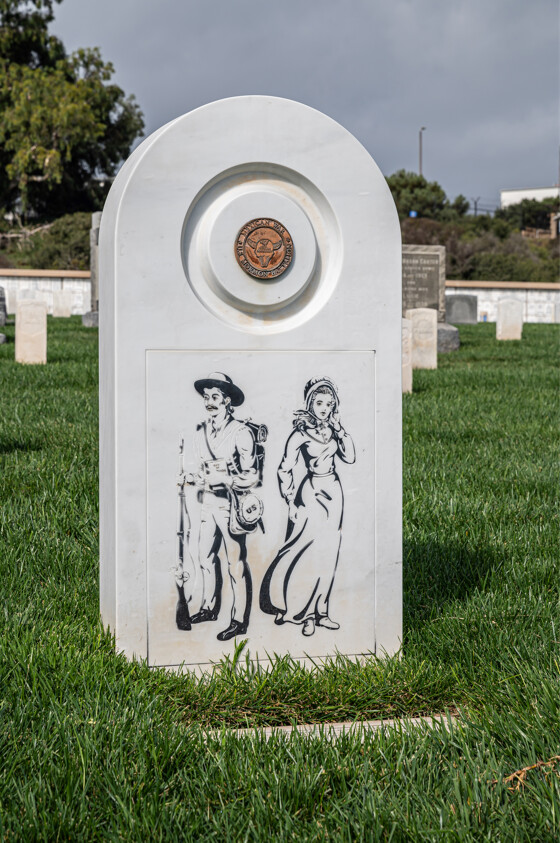
While most of the women left with one of the sick detachments partway through the march to stay the winter at a trapping settlement, researchers knew that five wives of leaders in the battalion (two captains and three sergeants) were given permission to travel all the way to California. Four of these women have been clearly accounted for in known research, but the identity of the fifth woman had been more elusive until recently.
One clue that led to finding the fifth woman’s identity is the fact that there were two sergeants in the Mormon Battalion with the last name of Brown who started their march with wives named Mary. But only one Mary Brown is listed on the records of battalion members who returned to Utah. This left researchers unclear as to what happened to the other Mary Brown. Did she also return to Utah, or did she carry on to California?
Over time, researchers discovered sources that led them to conclude that the other Mary Brown (actually Mary Clark Steele Brown) went all the way to California with her husband, which would make her the missing fifth woman. For example, Mary Clark Steele Brown, her husband, and her sons and stepsons were all found in the 1850 California census. In addition, when this Mary Brown’s obituary was printed in the Deseret News in 1873, her home was listed in California. And finally, a pension record for one of her sons also listed her home in California—all sufficient evidence to conclude that Mary Clark Steele Brown was the fifth woman to march with the Mormon Battalion all the way to the end of the trail.
Forward, March
The discovery of new sources and people is exciting, but it is not the end of the project for the Mormon Battalion Association, Anderson says. “One of the things that has really helped us in our research on these people is a database … that we have been putting together. It now has 20,000 original documents, and we are transcribing them.”
Anderson also says that the association is working with others, such as the Church History Department and Jill Crandell, who runs Brigham Young University’s Center for Family History and Genealogy, to make sure everyone is identifying the same members and giving the most accurate information. But, Anderson says, “If they have a different idea than we do, we go out and do the research and thanks to the efforts of … Kirk, we usually come to a consensus.”
As the Mormon Battalion Association moves forward with the work of transcribing, gathering, and problem solving, they have hopes of seeing a bountiful harvest in return for their labors—for themselves, for those interested in the Mormon Battalion’s history, and especially for the descendants of battalion members—as the records they have found are added to FamilySearch alongside other pioneer-era records.
A Modern Battalion
Members of the Mormon Battalion Association may not have been mustered into a military unit, but they have been forging their own kind of “roads” as they have collected, sorted, and chronicled all aspects of the Mormon Battalion. Many different people from many different backgrounds have been working for the past six years on identifying an accurate list of battalion members.
Christofferson is a longtime member of the Mormon History Association who has presented studies and papers on various historic topics, though he has never had formal training as a historian. While members of the association do not have to have battalion members in their family tree, Christofferson’s wife is related to a few battalion men. Even without this connection, Christofferson says the Mormon Battalion has always interested him.
“The physical courage of these men—and they were buoyed up by the Holy Ghost and the Lord, I know they were—but when you read about the condition they were in when they got to Warner’s Ranch, for example, I mean, these guys are just dragging, they’re absolutely emaciated. Their own wives and mothers probably wouldn’t have recognized them from the way that they looked from the year before. What they have done, what they have accomplished, is absolutely incredible.”
Anderson became involved in the Mormon Battalion Association when she saw the passion of some of its members, and she has since recruited others with the same enthusiasm. She describes it like putting pieces of charcoal together and watching the ember start to light a fire. Like Christofferson, Anderson never had formal training. In fact, she describes herself as “a housewife who happens to do genealogy.” But the knowledge she has acquired about navigating the National Archives will benefit many historical researchers to come.
Kevin Henson, board chairman of the association, generated a greater interest in the battalion when he decided to hike the entire battalion trail from Winter Quarters, Nebraska, to San Diego, California. Though it took him three years to do, his passion impressed many landowners who had previously not allowed anyone to travel those sections of the trail. It also led to the creation of an interactive map now displayed on the Mormon Battalion Association’s website.
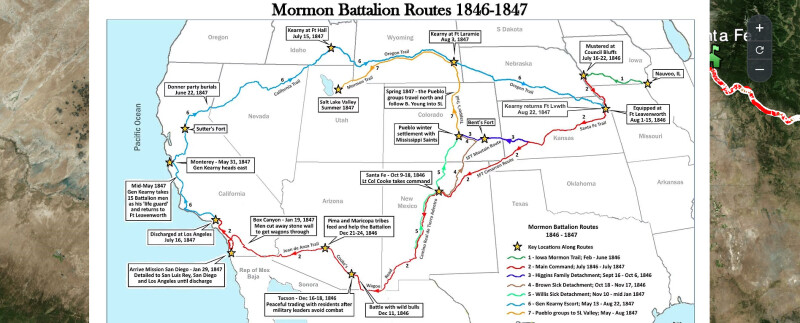
Then there are team members Kristine Forbes and Mary Ann Kirk, whose expertise and attention to detail has allowed them to not only identify countless mistakes but also where and how they were introduced. And there are countless others. As Anderson says, “I think we’ve got good fruit, and we’re getting very involved, and it’s just morphing into something that is really way cool.”
Identifying all the members of the battalion is not the only project the Mormon Battalion Association has been working on—they have been adding sources to FamilySearch and have started a Facebook page and a YouTube channel among other things. However, they do consider identifying the men of the Mormon Battalion a keystone to any research and work moving forward.
“We [the Mormon Battalion Association] march in parades on the 24th of July and that sort of thing,” Christofferson says. “People see that, but our goal has always been, as President McKay said, that the battalion should always be kept in honorable remembrance. The biggest part of that is to remember who exactly was there.”
The Mormon Battalion Association is a nonprofit organization that largely depends on donated time, money, and resources from volunteers to continue its research work. In conjunction with the anniversary of the Mormon Battalion’s creation, the association is also hosting a few extra special events to celebrate. Find out how to participate, volunteer, or donate by visiting the Mormon Battalion Association’s website.

